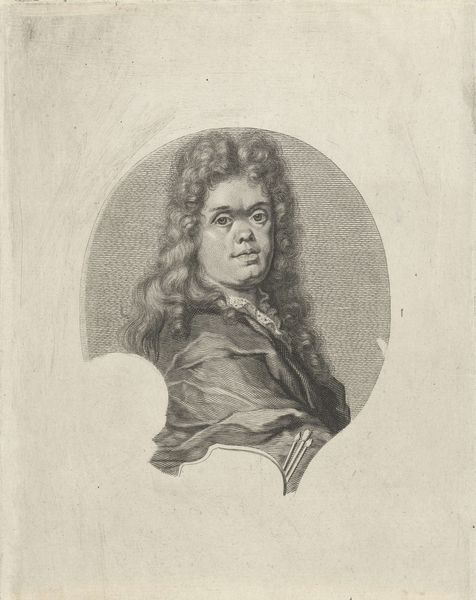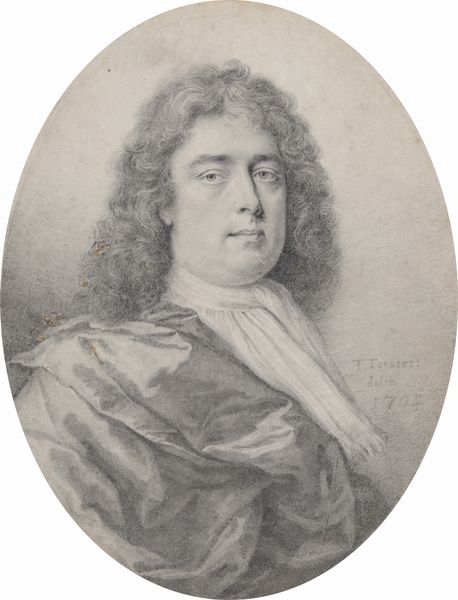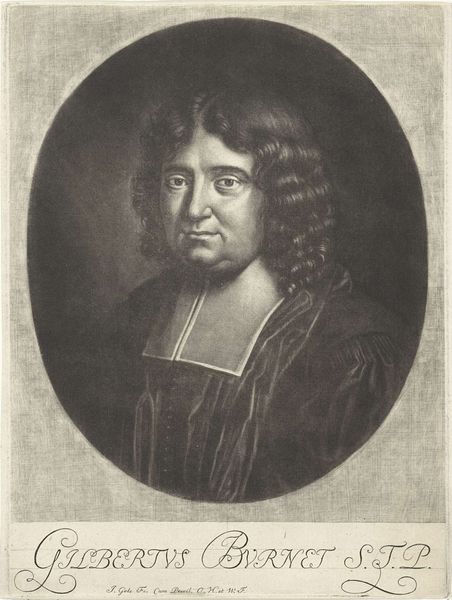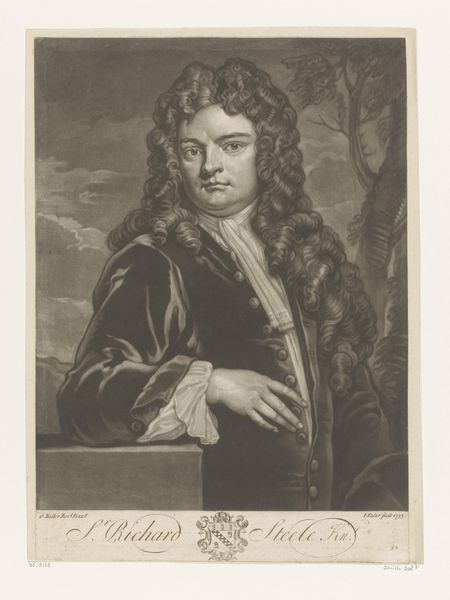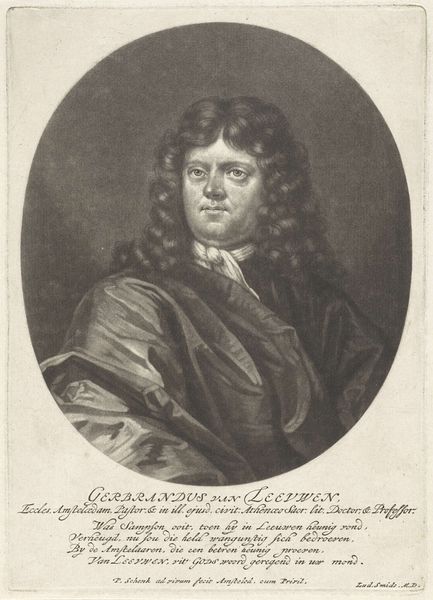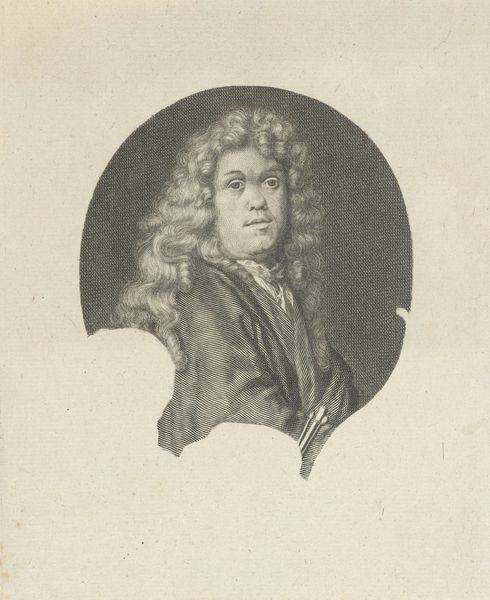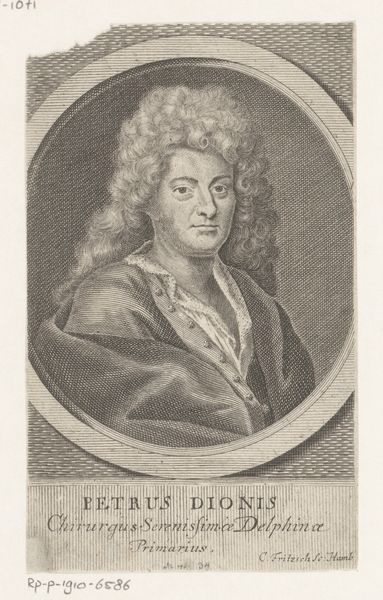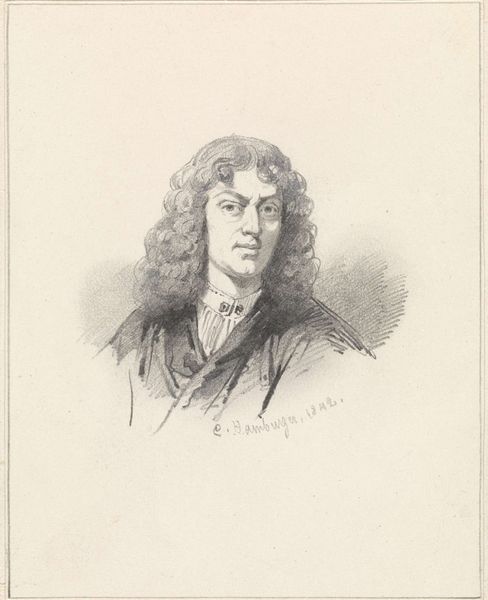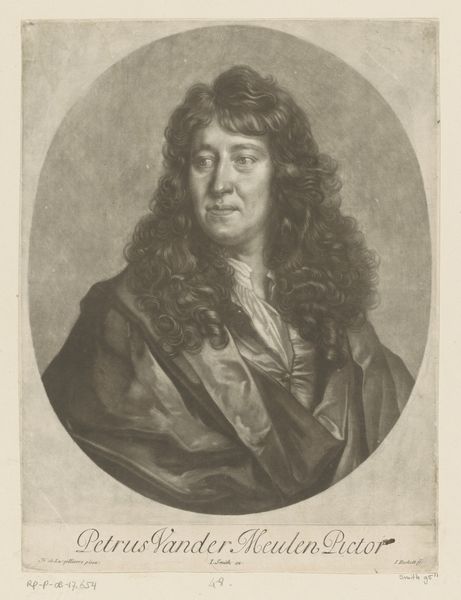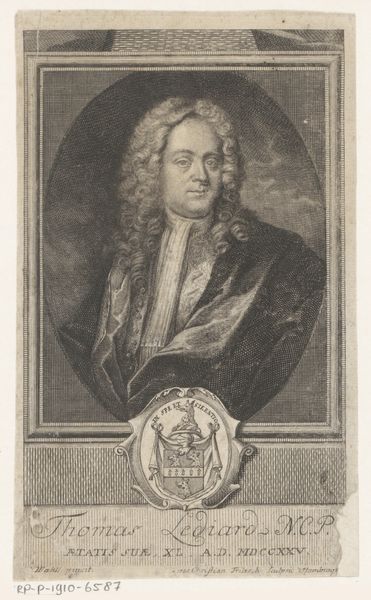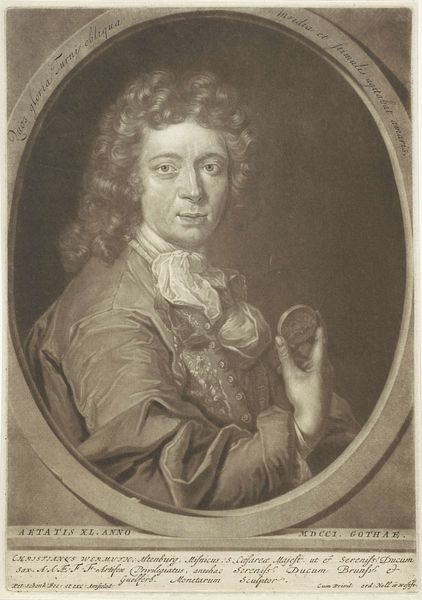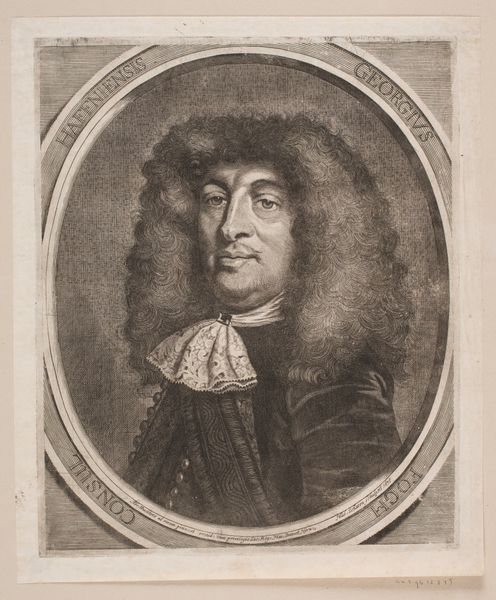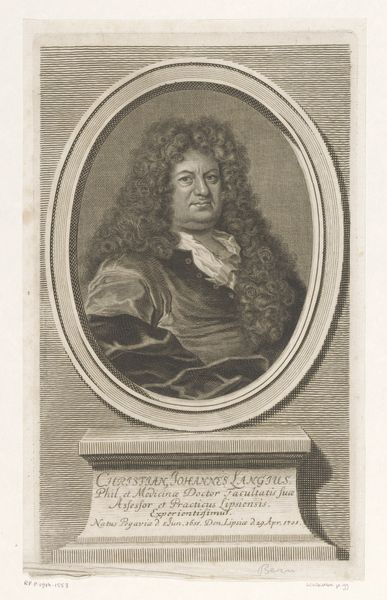
print, graphite, engraving
#
portrait
#
baroque
# print
#
old engraving style
#
pencil drawing
#
graphite
#
graphite
#
engraving
Dimensions: height 152 mm, width 128 mm
Copyright: Rijks Museum: Open Domain
Curator: Today we are looking at a print titled "Portret van Grinling Gibbons" made in 1748 by Petrus Camper. Editor: My first impression is the portrait looks severe despite the somewhat absurd baroque hair. The man stares directly out, unflinching, almost confrontational. Curator: The piece immediately stands out because of its baroque elements, from the elaborate hair, and its circular, oval frame, a popular way to present formal portraits at the time. The crisp engraving style provides a stark contrast with its opulent subject. Editor: Looking beyond style, the image situates Grinling Gibbons, an important, talented, yet historically marginalized, figure. Gibbons was a master woodcarver in England, but his contributions were sometimes overshadowed despite working for the British elite, which raises questions about patronage and access. Curator: Absolutely, Camper uses the engraving technique with a great level of refinement, it's clearly meticulous and the formal framing adds to a very noble character study. The play of light across the planes of the face is subtly done, considering the limitations of the print medium. It’s technically superb. Editor: I’d also add that printmaking itself was a powerful tool. Consider the way these printed portraits circulated, making elites, or those favored by elites like Gibbons, recognizable figures. Curator: Indeed. Its strength comes from how it showcases this detailed technique and classical composition of the time. Editor: For me, this work invites us to think about how access and power intertwine in art history itself. The fact that this talented artisan found his way into an artist's printed gallery challenges us to examine not just the "who" but the "how" of representation. Curator: Viewing the interplay between formal artistic approach and the character’s own standing encourages a more nuanced look at 18th century portraiture overall. Editor: A perspective that emphasizes art history not in isolation, but in active conversation with culture and politics.
Comments
No comments
Be the first to comment and join the conversation on the ultimate creative platform.
